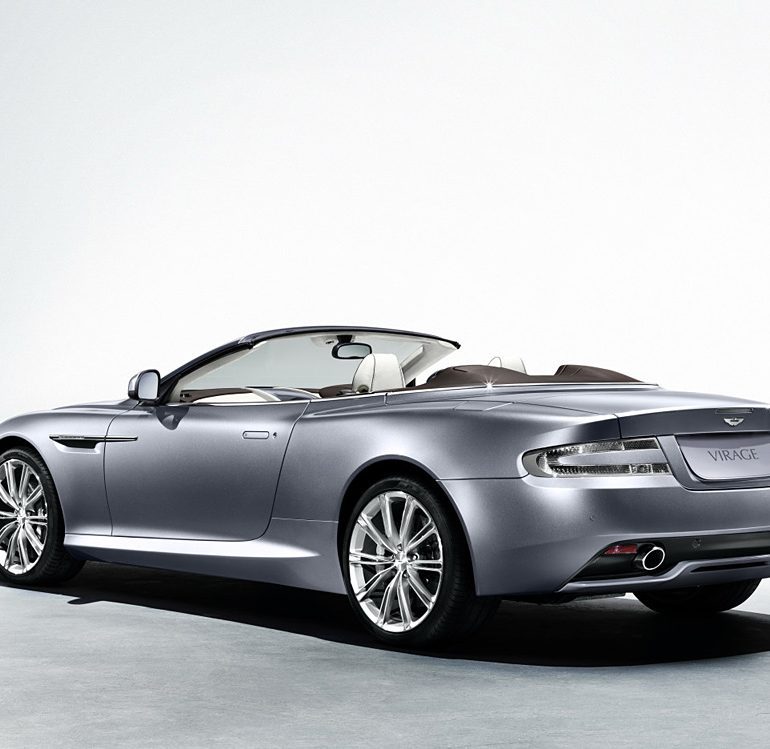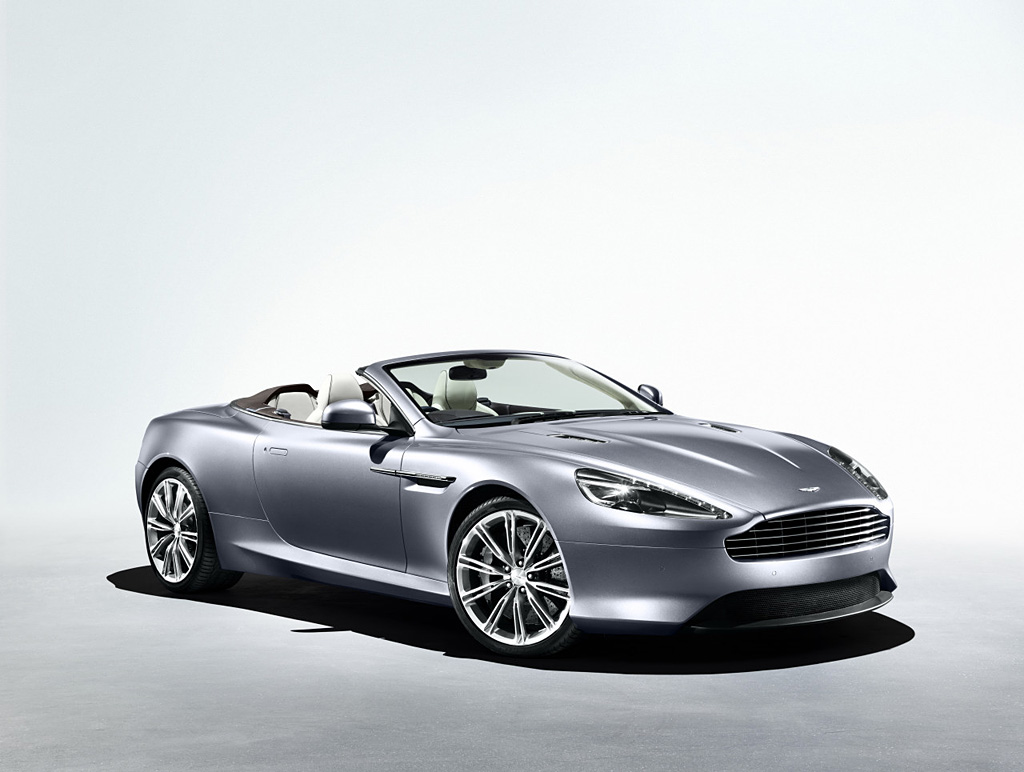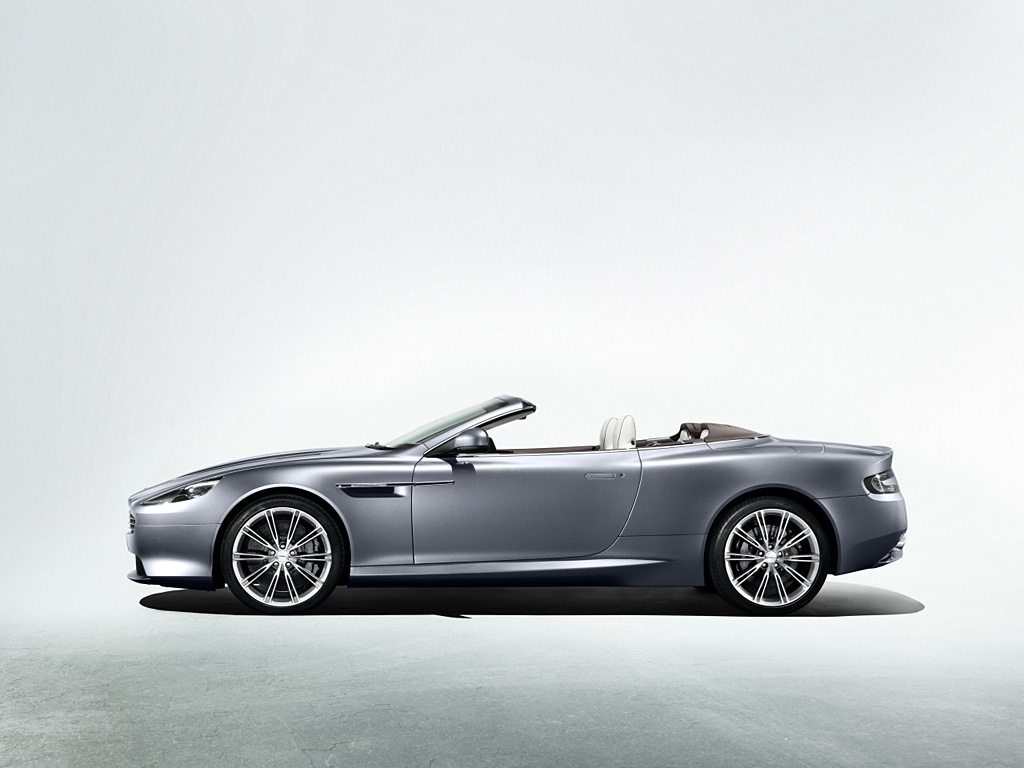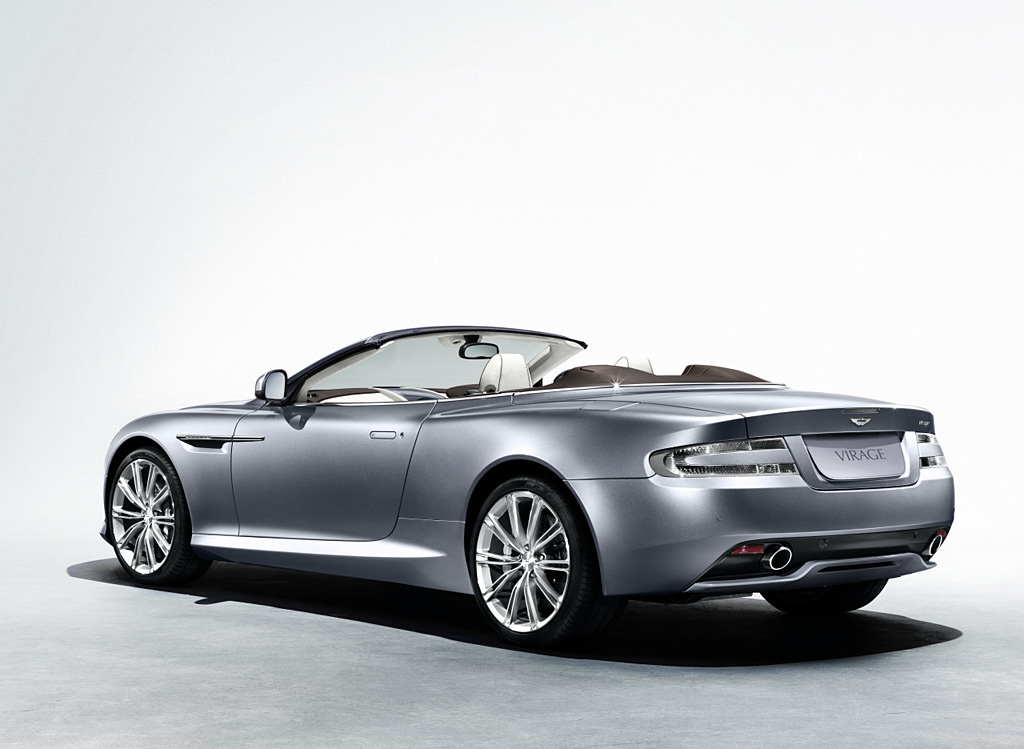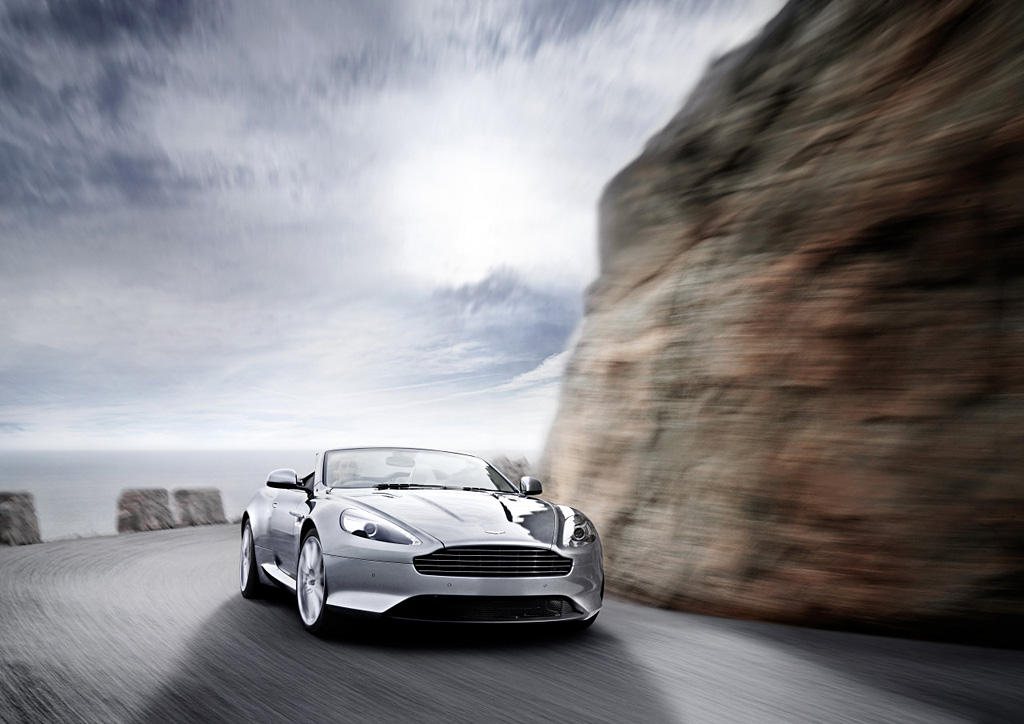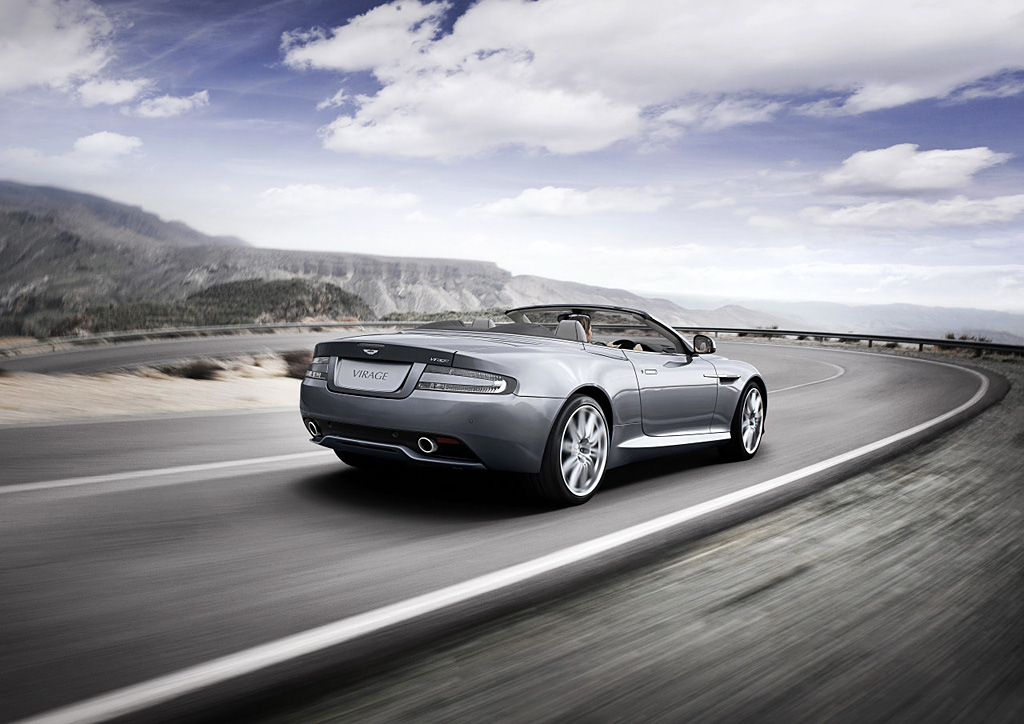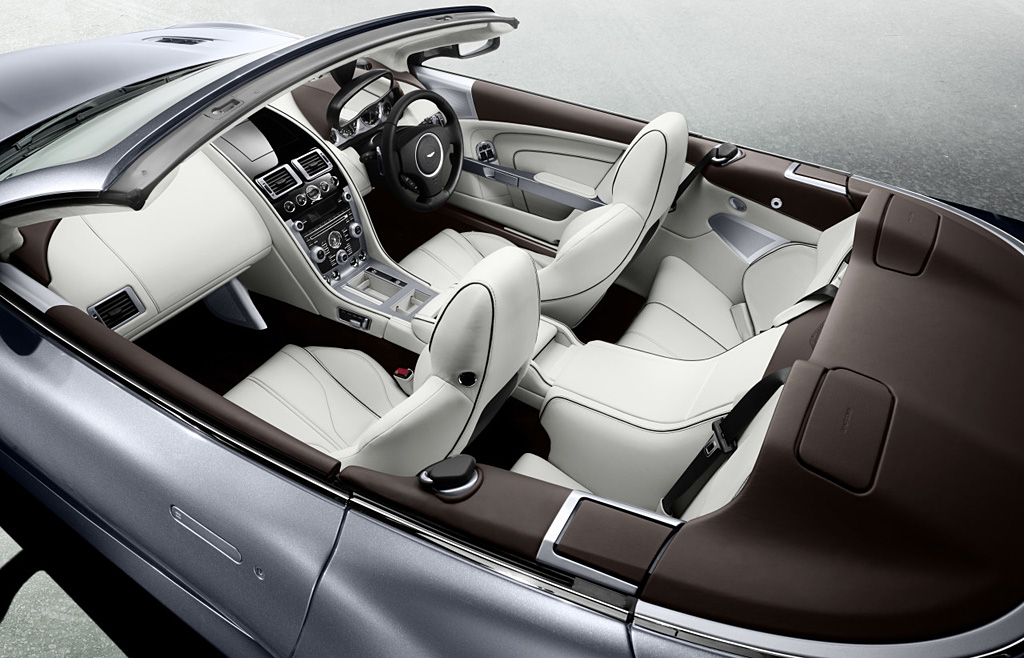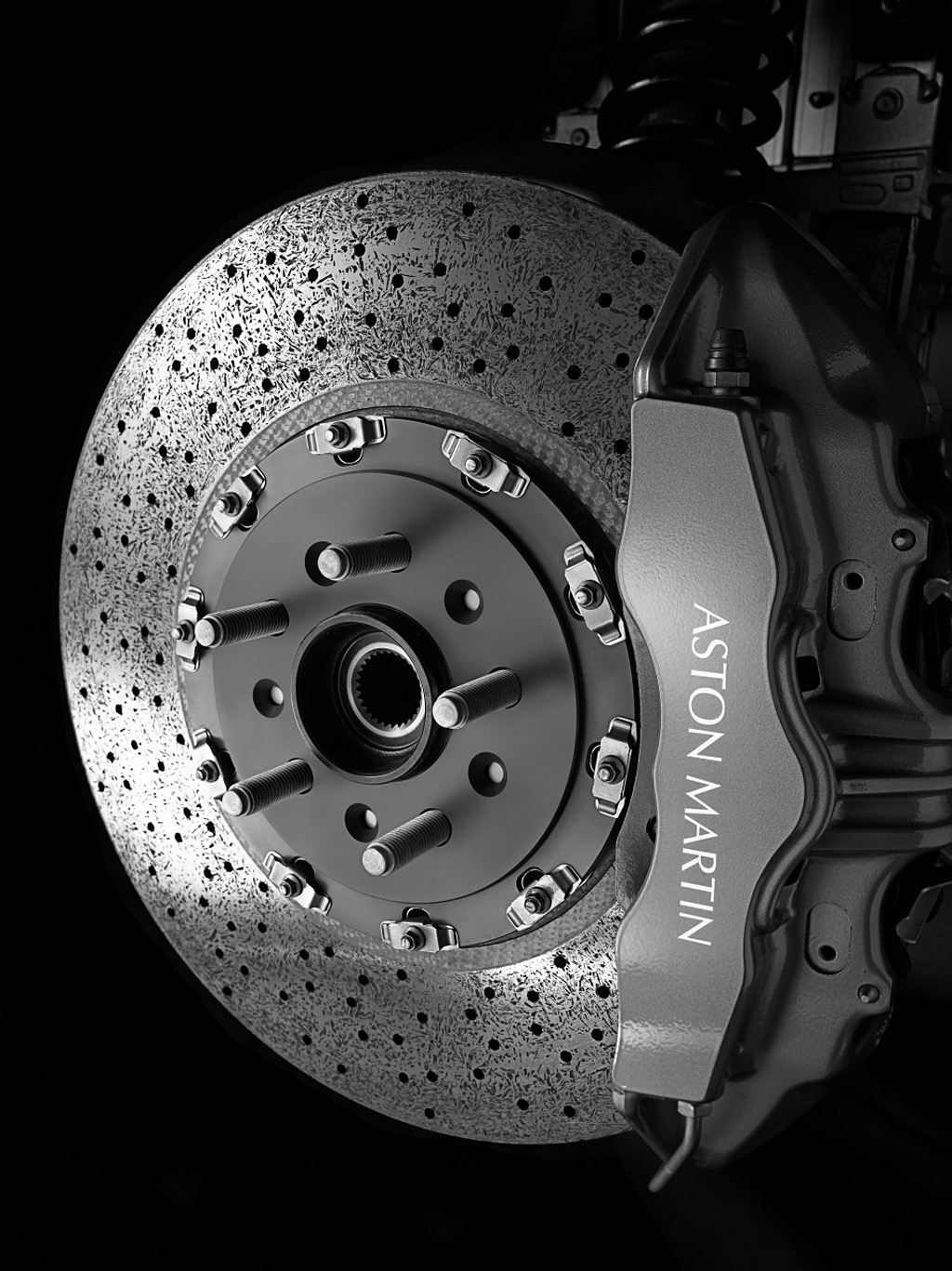2012 Aston Martin Virage Volante
Gaydon, 23 February 2011. Aston Martin introduces the new Virage – supremely elegant and powerful, yet juxtaposed as an understated sports car. The marque can now provide customers with a class-leading range, all with different characters, yet with the same unique Aston Martin soul and luxury.
Beautiful, dynamic and prestigious, the Virage combines outright sports car performance with luxury, comfort and refinement. The front mid-mounted V12 engine’s torque delivery provides outstanding performance, coupled with the car’s inherent agility and perfect weight distribution delivering the ideal balance between outright sports car performance and trademark sporting luxury exemplified by modern Aston Martins.
Aston Martin CEO, Dr Ulrich Bez said: “100 years of automotive history has demonstrated that evolution delivers the best solutions in time.
“So it is with Virage; it is the next level of evolution in our VH architecture strategy and it does everything with the perfection that you would expect today. It is the perfect balance of opposites.”
The Virage sits between the enduringly elegant DB9 and overtly sporting DBS, providing customers with a car that remains luxurious and understated but delivers increased performance and crucially performance that is always accessible for effortless driving.
Aston Martin’s revered hand-built 6.0 litre V12 engine produces 490 bhp (365 kW/497 PS) and 570 nM (420 lb. Ft) of torque and through its carbon fibre prop shaft, is mated to a six-speed Touchtronic II automatic transmission mounted on the transaxle contributing to perfect 50:50 weight balance.
The Virage’s dynamics have been tuned to deliver an engaging yet more refined driving experience, where the driver can extract the maximum performance from the car with greater ease. A newly developed Adaptive Damping System (ADS) intelligently ‘reads’ the road to provide optimum road holding, adapting to different conditions. The system now selects up to five different stiffness settings within normal mode, and a further five stiffer settings within sport mode.
Aiding driver control, a ‘Sport’ button on the facia allows the driver to select a sharper throttle response and faster gear changes while also holding the gears without automatically shifting up at the revolution limiter.
Virage will be delivered with Carbon Ceramic Matrix (CCM) brakes as standard – bucking the trend in this market – offering progressive and tremendous stopping power. Powerful, resistant to fade and much lighter than conventional cast-iron discs, the CCM braking system means that not only is the overall vehicle weight reduced, but the weight saving at each wheel means that a better balance between ride comfort and handling can be struck. Lower rotational mass also provides improved acceleration.
Virage capitalises on the technology from the DBS and unites it with the comfort and refinement found in the DB9 and Rapide. Aston Martin’s own bonded aluminium ‘VH’ architecture that forms the backbone of the marque’s sports cars, takes inspiration from the aerospace industry where weight reduction is the ultimate goal. Strong yet light, the inherent properties of modular aluminium lend themselves perfectly to an extremely rigid and versatile platform which allows the production of a Virage coupe and Volante.
The Virage sits low and wide asserting the power which lies beneath; single bi-xenon headlamps follow the lines of the car’s flanks to give a more crisp and modern look from the front. A new aluminium metal front grille, inspired by the One-77, features five horizontal vanes which are chamfered creating an aerofoil profile. The new front bumper is pure and relieves the car of any visual complexities, contributing to the overall simplicity of design. The front wings distinguish the Virage from its stable mates housing a new modern interpretation of the Aston Martin iconic side strake housing six LEDs elegantly forming the side repeater. Virage’s side sills carry the simplicity of the front bumper through to the rear diffuser which houses a body-coloured blade accentuating the width of the car.
As drivers and passengers open the signature swan wing doors, they are greeted by the aroma of seven hides of the finest Bridge of Weir leather expertly hand stitched by craftsmen. Inspiration has been taken from luxury leather goods to produce a pinstripe welt which flows down either side of the facia and along the seat and door, drawing your eye through the car. Each Virage will have 70 man hours of expert craftsmanship lavished on the interior alone to create the famous sophisticated Aston Martin interior. In all, over 200 man hours will be spent handcrafting the Virage at Aston Martin’s global headquarters in Gaydon, Warwickshire, England as it becomes the tenth major production car to be built there in the space of less than eight years.
Simplicity runs throughout the car with the new fully integrated Satellite Navigation system that has been developed in conjunction with Garmin. The new system simplifies operation through the existing four-way joystick mounted on the facia. A new 6.5 inch high resolution display uses the latest graphics and maps to visually and aurally guide the driver to their destination.
Standard equipment includes heated seats (Sports seats only), cruise control, satellite navigation, Bluetooth telephone preparation and the powerful 700W Aston Martin Premium Audio System with Dolby® Pro Logic II® and full iPod® integration.
The Virage and Virage Volante are on sale now, available from Aston Martin’s global dealership network spanning 132 dealerships in 41 countries. Pricing for the new Virage will be confirmed at the Geneva Motor Show where it will be joined by two further new cars; the V8 Vantage S and the new Tailor-Fit Cygnet city car, all of which will be brought to production in the UK by Aston Martin in 2011.
In Detail
| submitted by | Richard Owen |
| type | Series Production Car |
| released at | 2011 Geneva Motor Show |
| built at | Gaydon, Warwickshire, England |
| price £/td> | £159,995 |
| engine | 60º V12 |
| position | Front-Mid, Longitudinal |
| aspiration | Natural |
| block material | Aluminum |
| valvetrain | DOHC, 4 Valves per Cyl |
| fuel feed | Fuel Injection |
| displacement | 5935 cc / 362.18 in³ |
| bore | 89 mm / 3.5 in |
| stroke | 79.5 mm / 3.13 in |
| compression | 10.97:1 |
| power | 365.4 kw / 490 bhp @ 6500 rpm |
| specific output | 82.56 bhp per litre |
| bhp/weight | 259.26 bhp per tonne |
| torque | 570 nm / 420.4 ft lbs @ 5750 rpm |
| body / frame | Extruded Aluminium Bonded Monocoque |
| driven wheels | RWD w/LSD and Traction Control |
| wheel type | Five-spoke Twin-prong |
| front tires | 245/35 Pirelli P Zero |
| rear tires | 295/30 Pirelli P Zero |
| front brakes | Carbon Ceramic Matrix Discs w/6-Piston Calipers |
| rear brakes | Carbon Ceramic Matrix Discs w/4-Piston Calipers |
| front wheels | F 50.8 x 21.6 cm / 20 x 8.5 in |
| rear wheels | R 50.8 x 27.9 cm / 20 x 11 in |
| steering | ZF Rack & w/Servotronic Power Assist |
| f suspension | Double Wishbones w/Coil Springs, Active Damping, Anti-Roll Bar |
| r suspension | Double Wishbones w/Coil Springs, Active Damping, Anti-Roll Bar |
| curb weight | 1890 kg / 4167 lbs |
| wheelbase | 2740 mm / 107.9 in |
| front track | 1586 mm / 62.4 in |
| rear track | 1581 mm / 62.2 in |
| length | 4703 mm / 185.2 in |
| width | 1904 mm / 75.0 in |
| height | 1289 mm / 50.7 in |
| transmission | Rear Mounted 6-speed Touchtronic II Automatic |
| final drive | 3.46:1 |
| top speed | ~299.27 kph / 186 mph |
| 0 – 100 kph | ~4.6 seconds |
| fuel capacity | 78 litres or 20.59 gal. |
| designers | Ian Cullum, Hendrik Fisker |


